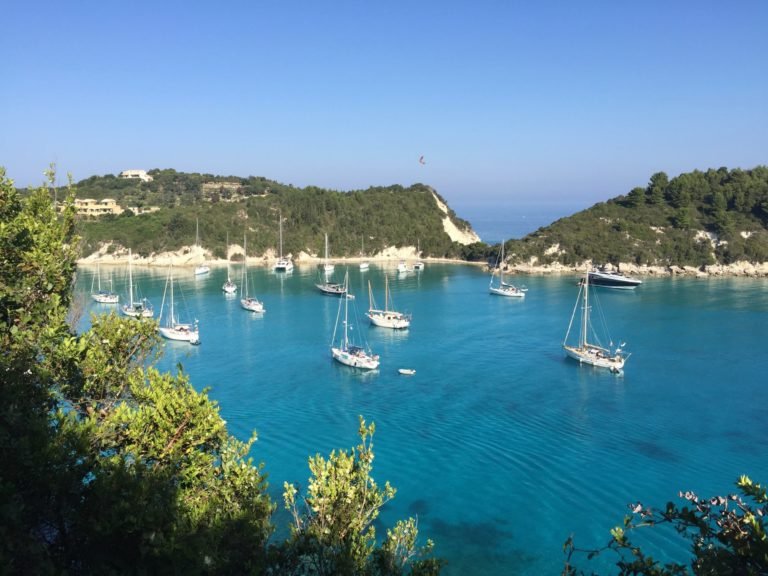A History of Nidri and Vlicho Bay
Nidri and Vlicho Bay are located on Lefkas Island (also known as Lefkada), part of the Ionian Islands in Greece. These areas are renowned for their natural beauty, historical significance, and vibrant tourism. Here’s a detailed history of these regions:
Ancient and Medieval History
Prehistoric and Classical Periods:
- Lefkas Island has a history dating back to prehistoric times, with evidence of human habitation as early as the Neolithic period.
- In the 7th century BCE, the island was colonized by the Corinthians, who established the city of Lefkada.
- Nidri, situated on the east coast of Lefkas, was likely an important settlement during classical times due to its strategic location along maritime routes.
Hellenistic and Roman Periods:
- During the Hellenistic period, Lefkada was under the influence of the Kingdom of Epirus.
- The island came under Roman rule in 197 BCE and became part of the Roman province of Achaea.
Byzantine and Venetian Periods:
- In the Byzantine era, Lefkas remained a part of the Eastern Roman Empire, with frequent raids by pirates and invaders.
- Following the Fourth Crusade in 1204, the island was controlled by various Western European powers, including the Despotate of Epirus and the Kingdom of Sicily.
- In the 14th century, Lefkas was taken by the Orsini family, and later, in 1479, it fell under Ottoman control before being ceded to the Venetians in 1684.
Modern History
Venetian and British Rule:
- Under Venetian rule, Lefkas experienced economic growth, and significant fortifications were built to defend against Ottoman incursions.
- Following the fall of the Venetian Republic in 1797, Lefkas was briefly controlled by the French before becoming part of the British-controlled United States of the Ionian Islands in 1815.
Incorporation into Greece:
- Lefkas, along with the other Ionian Islands, was ceded to Greece in 1864, becoming fully integrated into the modern Greek state.
Nidri and Vlicho Bay in the 20th Century
Early 20th Century:
- Nidri remained a small, traditional fishing village until the mid-20th century.
- The region around Vlicho Bay was characterized by its tranquil waters and lush landscapes, primarily attracting local fishermen and small-scale agriculture.
Tourism Development:
- The advent of mass tourism in the post-World War II era brought significant changes to Nidri and Vlicho Bay.
- Nidri, in particular, became a popular tourist destination due to its picturesque setting, proximity to Skorpios Island (famously owned by the Onassis family), and the scenic beauty of its surroundings.
- The development of infrastructure, such as hotels, restaurants, and marinas, transformed Nidri into a bustling tourist hub.
Contemporary Nidri and Vlicho Bay
Tourist Attractions and Economy:
- Today, Nidri is known for its vibrant waterfront, numerous tavernas, bars, and shops catering to tourists.
- The nearby Nydri Waterfalls (Dimosari Waterfalls) are a popular natural attraction, drawing visitors for hiking and sightseeing.
- Vlicho Bay, with its sheltered waters, is a favorite spot for yachting and sailing enthusiasts, offering a safe anchorage and stunning views.
Cultural and Historical Significance:
- Despite the modern tourist developments, Nidri and Vlicho Bay retain elements of their historical and cultural heritage.
- Traditional festivals and events, such as the annual Ionian Regatta, celebrate the maritime history and culture of the region.
Environmental Conservation:
- Efforts are being made to balance tourism with environmental conservation, preserving the natural beauty and biodiversity of the area.
- Initiatives to protect the marine environment and promote sustainable tourism practices are gaining importance in ensuring the long-term health of Nidri and Vlicho Bay.
In summary, Nidri and Vlicho Bay have evolved from ancient settlements and agricultural communities into prominent tourist destinations, while still retaining their rich cultural and historical heritage. The regions continue to thrive, offering a blend of natural beauty, historical significance, and modern amenities to visitors from around the world.





